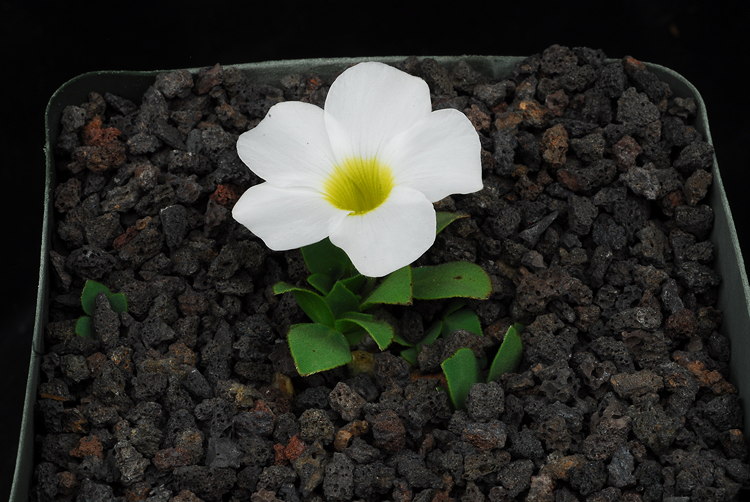At first glance, Oxalis adenodes may not look like an Oxalis at all. Oxalis is a diverse genus and this one is not so atypical, after all, with trifoliolate leaves from subterranean bulbs. However, the leaves are a pale green and the leaflets, each about 1.25 cm (1/2 in) long, are ovate with acute tips. These have a few scattered, white hairs while the margins are ciliate with thicker, pinkish hairs. The undersides of the leaflets are glabrous but have silvery cells lining the semi-palmate veins. Magnification may be required to see these features. The lateral leaflets partly overlay the terminal leaflet, giving the more erect tufts of leaves a different look than many Oxalis species. The flowers are typically gorgeous, and large for the size of the plant, to 4.5 cm (1 ¾ in) diameter with satiny white petals joined in a chartreuse throat. These flowers appear in Nov. – Dec. if our rains start early enough, or if supplemental water is given as the nights cool in Oct. The plants grow through winter then go dormant in spring as temperatures warm up and survive the dry summer as subterranean bulbs. We offer divisions of HBG 99065, originally from Michael Vassar (MV 7323) in Dec., 2002. Bulbs were collected by Charles Craib near Concordia, N. Cape, S. Africa. $10.

Published in the Cactus and Succulent Journal, Vol. 95 (2), Summer 2023